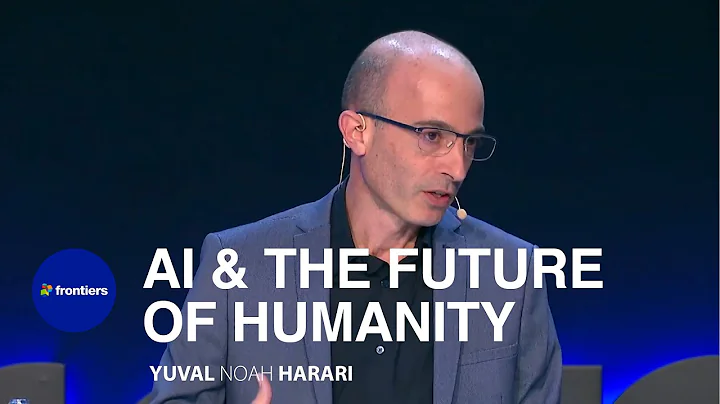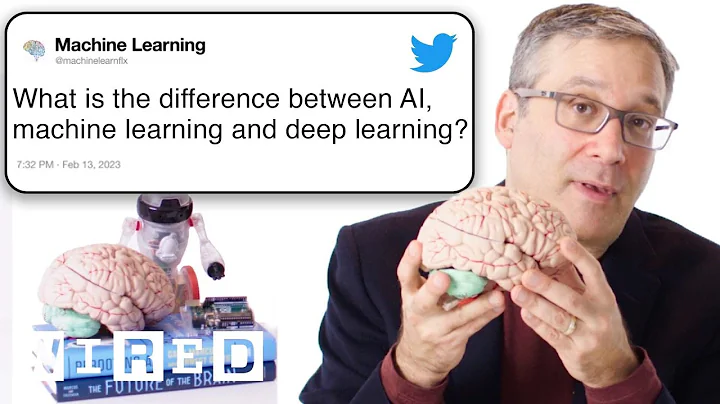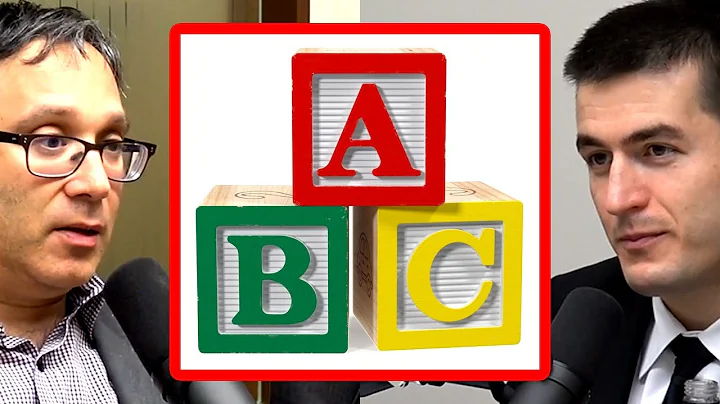Editor: David Joey As I wish
[ New Wisdom Introduction] LeCun published a new 60-page long article, which does not talk about AGI, but talks about "autonomous machine intelligence". Twitter also did not forget to call out his old enemy Gary Marcus to come and talk to him. Wire.
Recently, since Google researchers proposed the "awakening of consciousness" of the large language model LaMDA and was hidden by Google, there has been no discussion in the industry about the topic of "autonomous AI".
If AI really has its own consciousness, the debate about whether AGI can be realized and how to lead to AGI will almost be settled.
In this discussion, a pair of old enemies who have been in love and killed each other for many years in the AI world are naturally indispensable: Yann LeCun, one of the Turing Award winners, and Gary Marcus, the "King of Confronters" in the AI world.
![[Introduction to New Wisdom] LeCun published a new 60-page article, which does not talk about AGI, but talks about](https://cdn-dd.lujuba.top/img/loading.gif)
Gary Marcus himself has always been skeptical of deep learning. He claimed that deep learning cannot make further progress because of the difficulty of neural network in handling symbolic operations.
The mainstream AI academic community, represented by LeCun, believes that deep learning is already performing symbolic reasoning and will continue to improve.
The two have been "firing" on this issue for a long time. Recently, Marcus just wrote an article about "deep learning hitting the wall", and LeCun issued a rebuttal, meaning "Don't use temporary setbacks as hitting the wall, it's not that There are many walls to hit.”
LeCun’s 60-page long article explains “autonomous machine intelligence” thoroughly.
Perhaps because he felt that the article not long ago did not explain it thoroughly and satisfactorily, LeCun published another 60-page long article yesterday, titled “Towards the Road” "The Road to Autonomous Machine Intelligence", the system talks about "how machines can learn like animals and humans".
![[Introduction to New Wisdom] LeCun published a new 60-page article, which does not talk about AGI, but talks about](https://cdn-dd.lujuba.top/img/loading.gif)
LeCun said that this article is not only his thoughts on the general direction of AI development in the next 5-10 years, but also what he plans to research in the next few years, and hopes to inspire more people in the AI industry to study together.
![[Introduction to New Wisdom] LeCun published a new 60-page article, which does not talk about AGI, but talks about](https://cdn-dd.lujuba.top/img/loading.gif)
At the same time, LeCun did not forget to remind his old friend Gary Marcus that this article was posted on OpenReview. Comments are open. If you want to fight, come and fight.
![[Introduction to New Wisdom] LeCun published a new 60-page article, which does not talk about AGI, but talks about](https://cdn-dd.lujuba.top/img/loading.gif)
LeCun believes that today’s artificial intelligence research must solve three main challenges:
- How can machines learn to express the world, learn to predict and learn to take action through observation?
- How do machines reason and plan in a gradient-based learning compatible way?
- How do machines learn to represent perceptions and action plans in a hierarchical manner, with multiple levels of abstraction and multiple time scales?
![[Introduction to New Wisdom] LeCun published a new 60-page article, which does not talk about AGI, but talks about](https://cdn-dd.lujuba.top/img/loading.gif)
Paper address: https://openreview.net/forum?id=BZ5a1r-kVsf
This article mainly solves the problem of "how can machines learn to reason and plan". To this end, the article proposes an architecture and training paradigm to Build autonomous agents.
The article combines concepts such as configurable predictive world models, behavior driven by intrinsic motivation, and hierarchical joint embedding architectures trained with self-supervised learning.
LeCun said that the main points of this article are some of the points he had stated on the Facebook blog more than a month ago.
![[Introduction to New Wisdom] LeCun published a new 60-page article, which does not talk about AGI, but talks about](https://cdn-dd.lujuba.top/img/loading.gif)
He believes that there is no such thing as "AGI". It is better to be realistic and pursue "human-level AI" (HLAI).
Currently we are making some progress towards HLAI, increasing the size of the model is somewhat useful, but not enough because currently we are still missing some basic concepts.
Some of these new concepts may be “right around the corner” (such as generalized self-supervised learning). But we don't know how many of these new concepts are needed. Now we are just looking at the most obvious concepts. Therefore, it is impossible to predict how long it will take to reach human-level AI.
Specifically, this article mainly solves the following problems:
1. An overall cognitive architecture is proposed in which all modules are distinguishable and many of them are trainable.
![[Introduction to New Wisdom] LeCun published a new 60-page article, which does not talk about AGI, but talks about](https://cdn-dd.lujuba.top/img/loading.gif)
System architecture for autonomous intelligence
2. Proposed a non-generative architecture JEPA and hierarchical JEPA for learning predictive world models representing hierarchical structures:
![[Introduction to New Wisdom] LeCun published a new 60-page article, which does not talk about AGI, but talks about](https://cdn-dd.lujuba.top/img/loading.gif)
Joint Embedding Prediction Architecture (JEPA) consists of two coding branches
![[Introduction to New Wisdom] LeCun published a new 60-page article, which does not talk about AGI, but talks about](https://cdn-dd.lujuba.top/img/loading.gif)
The hierarchical JEPA architecture derived from the above figure
3. A non-contrastive self-supervised learning paradigm that produces representations that are both informative and predictable
![[Introduction to New Wisdom] LeCun published a new 60-page article, which does not talk about AGI, but talks about](https://cdn-dd.lujuba.top/img/loading.gif)
The main advantage of JEPA is that it can be trained using non-contrastive methods
4 . one A method using H-JEPA as the basis for a predictive world model for hierarchical planning under uncertainty.
![[Introduction to New Wisdom] LeCun published a new 60-page article, which does not talk about AGI, but talks about](https://cdn-dd.lujuba.top/img/loading.gif)
Hierarchical JEPA architecture for hierarchical planning
![[Introduction to New Wisdom] LeCun published a new 60-page article, which does not talk about AGI, but talks about](https://cdn-dd.lujuba.top/img/loading.gif)
Hierarchical JEPA architecture for hierarchical planning in uncertain environments
LeCun said that although AGI is not possible, the above tools and methods may take us away from "human-level autonomy" "Smart" is closer.
![[Introduction to New Wisdom] LeCun published a new 60-page article, which does not talk about AGI, but talks about](https://cdn-dd.lujuba.top/img/loading.gif)
In addition, he also said that some of these structures, ideas and methods were not proposed by him first. He just integrated them into a set of interrelated structures. It is inevitable that there are references that he forgot to list. Corrections are welcome.
The boss is still humble.
How to make the agent truly "intelligent"?
LeCun said that the architecture proposed in this paper is not specifically designed to simulate autonomous intelligence, reasoning and learning in humans and other animals, but it does have some similarities.
Many modules in this architecture have corresponding modules in mammals: for example, the brain has similar functions, and the perception module corresponds to vision, hearing and other sensory areas, as well as some related areas.
The architecture in this article builds a single world model engine. LeCun believes that this not only provides computing advantages through hardware reuse, but also allows knowledge to be shared across multiple tasks.
There has always been an assumption that "there is a single, configurable world model engine in the human brain."
This may explain why humans can essentially perform a single "conscious" reasoning and planning task at a time.
About emotions
![[Introduction to New Wisdom] LeCun published a new 60-page article, which does not talk about AGI, but talks about](https://cdn-dd.lujuba.top/img/loading.gif)
The basis of animal and human emotions is instantaneous emotions (such as pain, happiness, hunger, etc.), which may be the effect of brain structure, and its meaning is similar to the "intrinsic cost" module in the proposed architecture.
Other emotions, such as fear or joy, may be the result of the brain's structure anticipating the outcome.
The kind of autonomous agents proposed in this article will have something similar to emotions. Like animals and humans, machine emotions are the product of inherent costs.
About common sense
![[Introduction to New Wisdom] LeCun published a new 60-page article, which does not talk about AGI, but talks about](https://cdn-dd.lujuba.top/img/loading.gif)
It is generally believed that current AI systems do not possess any degree of common sense, not even that of domestic cats. And animals seem to be able to acquire enough background knowledge about how the world works to exhibit a degree of common sense.
LeCun speculated that common sense might emerge from learning a world model that captures the self-consistency and interdependence of observations in the world, allowing agents to fill in missing information and detect violations of their world model.
"Autonomous AI" cannot be achieved by adding parameters
In recent years, large language models, especially the Transformer architecture, have achieved amazing success in text generation and intelligent dialogue.
This has sparked a debate in the AI community whether human-level AI can be achieved by scaling up these architectures. LeCun believes that it is not possible, mainly for two reasons:
![[Introduction to New Wisdom] LeCun published a new 60-page article, which does not talk about AGI, but talks about](https://cdn-dd.lujuba.top/img/loading.gif)
First, the current model operates on "tokenized" data and is generated.
These data are subject to generative models, latent variable free models, and contrastive methods. Generative models have difficulty representing complex uncertainties in continuous spaces.
Secondly, current models can only perform very limited inference. Dynamically specifying goals in such a model is essentially impossible.
Another reason is insufficient rewards.
In most reinforcement learning settings, rewards are provided to the agent by the environment. In other words, the inherent cost of training is the environment itself, an unknown function. A pure reinforcement learning system would require a large number of trials to learn even relatively simple tasks.
And if you want to train the model by predicting the state of the world, the reward is obviously not enough, because most parameters in the system are trained to predict a large number of observations in the world.
Reference:
https://openreview.net/forum?id=BZ5a1r-kVsf
https://www.facebook.com/yann.lecun/posts/10158256523332143





















